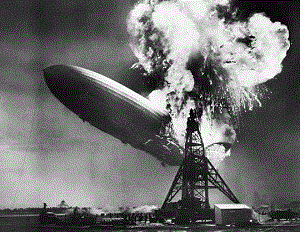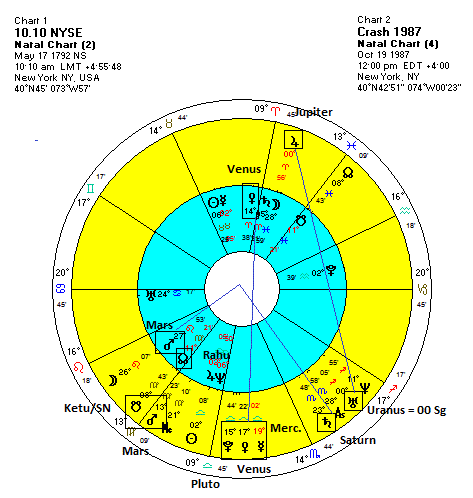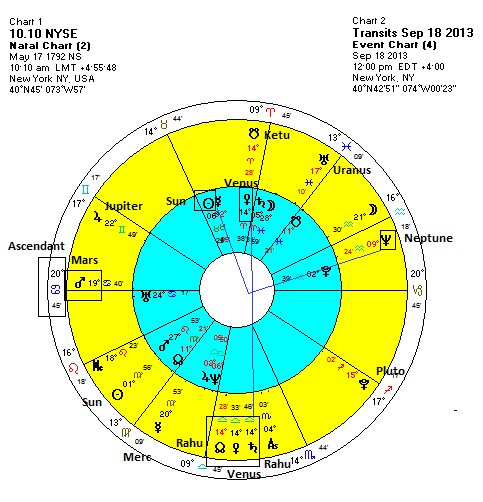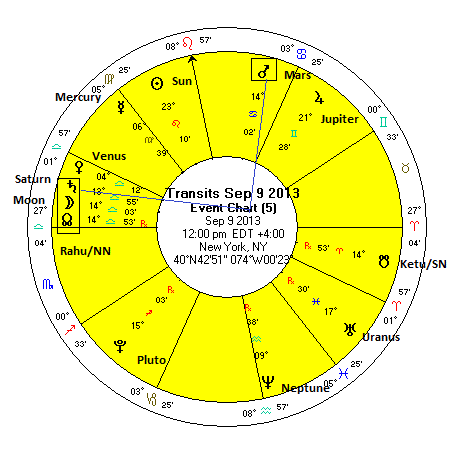 (8 September 2013) Recently there has been a lot of talk by technical analysts about the Hindenburg Omen. Named after the doomed airship that crashed in 1937 in New Jersey, the Hindenburg Omen is a series of criteria of stock market measurements that predicts market crashes. The premise of the criteria is that stocks tend to display greater extremes in behavior before a large decline. This is reflected, for example, in a higher number of stocks hitting their 52-week highs and 52-week lows simultaneously. The track record of the omen is impressive as it has correctly predicted every major crash or decline over the past 25 years. However, it has also misfired a number of times by issuing many false positives — occasions when the technical criteria was fulfilled but the market did not crash.
(8 September 2013) Recently there has been a lot of talk by technical analysts about the Hindenburg Omen. Named after the doomed airship that crashed in 1937 in New Jersey, the Hindenburg Omen is a series of criteria of stock market measurements that predicts market crashes. The premise of the criteria is that stocks tend to display greater extremes in behavior before a large decline. This is reflected, for example, in a higher number of stocks hitting their 52-week highs and 52-week lows simultaneously. The track record of the omen is impressive as it has correctly predicted every major crash or decline over the past 25 years. However, it has also misfired a number of times by issuing many false positives — occasions when the technical criteria was fulfilled but the market did not crash.
The US stock market recently satisfied the criteria of the omen in mid-August when several signals formed in quick succession. It is believed that the signal is valid for 30 trading days. Assuming that no new omens are triggered, this signal will be valid until mid- to late-September. While the market is showing signs of weakness recently, one wonders if this will turn out to be just another false positive for the Hindenburg Omen. So we can ask the question: just how close are we to a stock market crash?
At the risk of sounding vague, the short answer is: closer than we usually are. I have been fairly pessimistic about the market in September due to some unusual alignments involving the traditionally malefic planets of Mars, Saturn and Rahu (i.e. North Lunar Node). Saturn and Rahu are conjunct for most of September and this is one of the main reasons for my less than sanguine view of market sentiment in the coming weeks. As an added burden, Mars forms a close square aspect to Saturn-Rahu this week and therefore it could act as a planetary trigger for all that supposedly bearish energy.
In fact, it is possible to construct an astrological equivalent to the Hindenburg Omen. That is to say that there are several astrological criteria that should be present before a crash can occur. Broadly speaking, these are:
1. A tense transit alignment of planets involving one or more malefic planets (e.g. Mars, Saturn, Rahu, Ketu). The 1987 crash occurred when Mars was conjunct Ketu and square Neptune.
2. A close transit alignment between two or more slow moving planets (Jupiter, Saturn and on out to Pluto). The 2008 crash featured a very unusual and close alignment of Saturn, Rahu and Neptune.
3. An obvious pattern of transit affliction to three or more planets or points in the horoscope of the New York Stock Exchange or its proxies. This should include at least one transiting slow moving malefic planet (e.g. Saturn, Rahu). Pluto was in a close square with the NYSE Moon at the time of the 1929 crashwhile Saturn was in tense aspect with Mercury and the Sun.
4. An obvious pattern of affliction in the progressed chart of the NYSE involving hard aspects with malefics Mars, Saturn and Rahu/Ketu. The more planets/points this progressed malefic contacts, the greater the probability of a decline and the greater the size of the decline.
To be sure, all of these criteria are subject to some degree of interpretation. It is possible for a chart to feature some of these difficult patterns but they could be offset by some positive patterns which could nullify the crash signal. To see how it might operate, let’s look at what was happening in the sky at the time of the 1987 crash when stocks declined over 20% in a single day on October 19, 1987.

In terms of transits (outer ring), the pattern did not seem especially negative. As note above, Mars was conjunct Ketu and both were square to Neptune. This is definitely a difficult pattern but the aspects were not that close. This satisfies criteria 1 and 2 although perhaps only marginally. Pluto was conjunct Venus and retrograde Mercury. Although this may not be seen as necessarily negative, it was quite noteworthy to have a rare triple conjunction at the time. Interestingly, Jupiter formed a close trine aspect with Uranus — normally a bullish pairing. The wild card here is that Uranus had changed signs and entered sidereal Sagittarius on the day of the crash. Uranus (sudden and unexpected events), is a very slow moving planet and only changes signs about once every seven years. Typically, the Uranus sign change is bearish and generates some kind of decline.
The NYSE chart was also very afflicted by transits thus fulfilling condition #3. Transiting Saturn (23 Scorpio) was square to the natal Mars (27 Leo). The Ketu-Mars conjunction was itself conjunct natal Rahu (11 Virgo). Such nodal transits are often bearish in their influence and this was likely intensified by the presence of transiting Mars. Perhaps most importantly, the Pluto-Venus-Mercury conjunction was very close to an exact opposition to natal Venus (14 Aries). Venus is the planet of money and the opposition by Pluto is very malefic. The faster moving Venus and Mercury likely acted as triggers.
The progressions were also very malefic at the time of the crash (not shown). Tertiary progressed Mercury was conjunct TP Saturn. Worse still, TP Mars was square both Neptune and Ketu. This pattern of affliction clearly fulfilled criteria #4.

The current situation of the NYSE horoscope shows some similarities to the 1987 crash. As noted above, the transit picture is quite stressful here as Mars squares both Saturn and Rahu. This is exact in the early part of this week. Next week, Venus will conjoin the Saturn-Rahu conjunction and thus offer another plausible trigger for the malefic Saturn-Rahu energy. Pluto remains in its protracted square aspect with Uranus although without a trigger it is unclear just how influential this three-year long tense aspect really is. Nonetheless, I would say that the current situation satisfies conditions 1 and 2.
The current transits to the NYSE are actually quite reminiscent of 1987. Just as the 1987 featured a multi-planet alignment with natal Venus, so too does the current transit have Venus in its sights. The Saturn-Rahu conjunction at 14 Libra occurs exactly opposite Venus (14 Aries). This may be activated by perhaps several faster moving trigger planets such as Mars (Sept 10), Venus (Sept 18) Mercury (Oct 6) and even the Sun (Oct 31). While these are significant alignments, there is a relative absence other patterns in this chart. For example, the ongoing Uranus-Pluto square is not forming any major aspects in the chart. Neptune (9 Aquarius) is still squaring the Sun (6 Taurus) so that could also be seen as a background burden. Transiting Mars comes to the Ascendant in the 10.10 NYSE chart on September 18th so that is interesting as Bernanke is due to address the possibility of QE tapering on that day. It is worth noting that the Flash Crash of May 6, 2010 occurred when Mars was also conjunct this Ascendant at 20 Cancer. However, the correctness of the 10.10 chart is heavily contested, so we might not want to put too much weight on that Mars transit to the Ascendant. Overall, I think these pattern satisfy criteria #3 although perhaps somewhat minimally.
The current progressed chart of the NYSE is also afflicted. Tertiary Progressed Mars squares TP Mercury and TP Jupiter (which are conjunct). While this fulfills the 4th condition, it is definitely not as negative as the progressed chart for the 1987 crash. Both Mercury and Jupiter are benefics and while the Mars influence is largely negative, the overall pattern looks much less negative and less severe. By contrast, the 1987 progressed pattern featured three first-class malefics: Mars, Saturn and Ketu with Neptune thrown in for good measure.
And perhaps the biggest difference of all is the absence of any major planetary ingress in 2013. I think the size and intensity of the 1987 crash was likely greatly magnified by the entry of Uranus into Sagittarius. There is no such ingress this time around.
The bottom line here is that there is a viable argument to be made for some kind of crash. All of the four criteria I have suggested are fulfilled and thereby constitute an astrological equivalent to the Hindenburg Omen. That said, I think the current set up may be more of a Hindenburg Lite as the nature of some of the patterns seem less dangerous than in 1987 and in 2008. So while a one-day 10% crash may not quite be considered probable, the US market still seems much more likely to move lower in the weeks ahead.

The planets this week look quite potent. That Mars-Saturn-Rahu alignment in the first half of the week looks quite ugly indeed and may correlate with rising anxiety, probably involving the Syria question. It is hard to see how the market could rise on such a nasty-looking alignment. Gains are perhaps somewhat more likely in the second half of the week. And all of this is leading up to the rare triple conjunction of Venus-Saturn-Rahu in Libra on September 18th next week. We live in interesting times.
You can be notified of new posts if you follow ModernVedAstro on Twitter.
Please note that this is a much abbreviated free version of my
investor newsletter which can be subscribed to here.
Please read my Disclaimer
Market forecast for week of 2 September 2013
Market forecast for week of 26 August 2013
Market forecast for week of 19 August 2013
Market forecast for week of 12 August 2013
Market forecast for week of 5 August 2013
Market forecast for week of 29 July 2013
Market forecast for week of 22 July 2013
Market forecast for week of 15 July 2013
Market forecast for week of 8 July 2013
Market forecast for week of 1 July 2013
Market forecast for week of 24 June 2013
Market forecast for week of 17 June 2013
Market forecast for week of 10 June 2013
Market forecast for week of 3 June 2013
Market forecast for week of 27 May 2013
Market forecast for week of 20 May 2013
Market forecast for week of 13 May 2013
Market forecast for week of 6 May 2013
Market forecast for week of 29 April 2013
Market forecast for week of 22 April 2013
Market forecast for week of 15 April 2013
Market forecast for week of 8 April 2013
Market forecast for week of 1 April 2013
Market forecast for week of 25 March 2013
Market forecast for week of 18 March 2013
Market forecast for week of 11 March 2013
Market forecast for week of 4 March 2013
Market forecast for week of 25 February 2013
Market forecast for week of 18 February 2013
Market forecast for week of 11 February 2013
Market forecast for week of 4 February 2013
Market forecast for week of 28 January 2013
Market forecast for week of 21 January 2013
Market forecast for week of 14 January 2013
Market forecast for week of 7 January 2013
Market forecast for week of 31 December 2012
Market forecast for week of 24 December 2012
Market forecast for week of 17 December 2012


